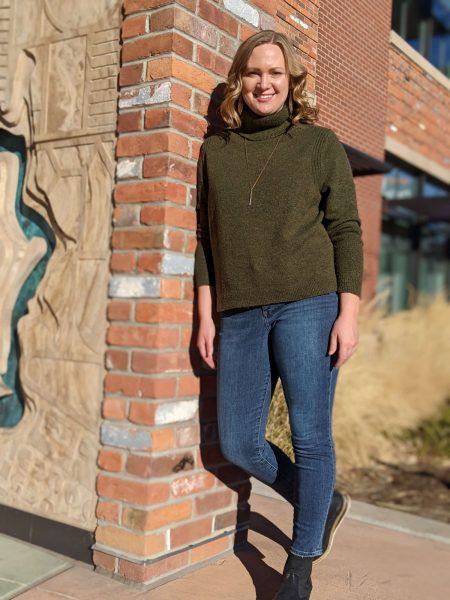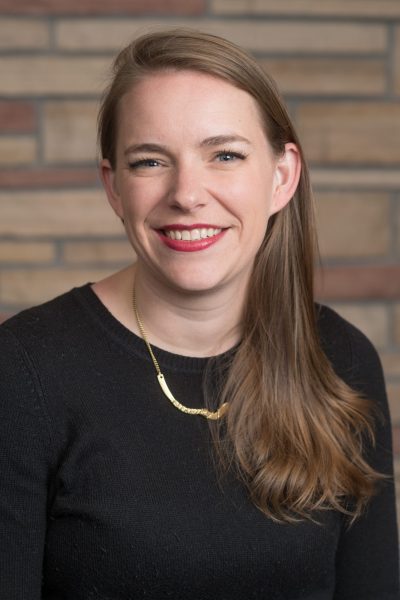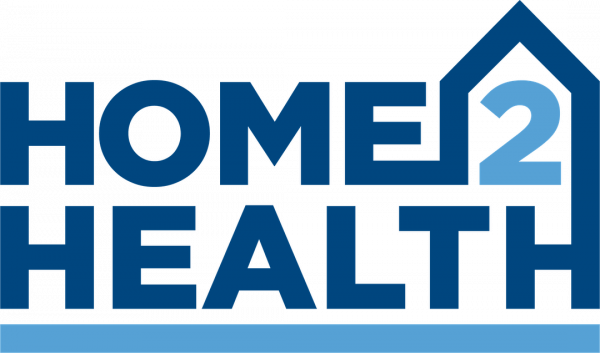When we think about health, many of us think about healthcare for our bodies. But according to the City of Fort Collins’s Home2Health program, “going to the doctor only accounts for about 20 percent of overall well-being.”
Access to safe, quality, affordable housing – and the supports necessary to maintain that housing – constitute one of the most basic and powerful social determinants of health reports the Corporation for Supporting Housing, a national nonprofit.
Access to safe, quality, affordable housing – and the supports necessary to maintain that housing – constitute one of the most basic and powerful social determinants of health
In Fort Collins, the relationship between housing and health has become the focus of Home2Health, a two-year collaborative program that started in 2019 with a Health Disparities Grant from the Colorado Department of Public Health and Environment.
The City of Fort Collins Planning and Social Sustainability Departments spearheaded Home2Health to inform the City’s forthcoming (2021) Housing Strategic Plan. The program seeks to learn how housing issues – whether cost, stability, or discrimination – as well as public transportation, sidewalks, parks, land use regulations, building codes and other public policies affect the health of Fort Collins residents.
“There’s a growing awareness that the built environment has a lot of impact on your physical, emotional, and mental health, and the City has a lot to do with that built environment,” says Meaghan Overton, City of Fort Collins Senior Planner and one of the architects of Home2Health.
Home2Health was designed to capture the voices and ideas of community members who experience the day-to-day reality of housing instability. Based on previous successes with small group conversations, the City envisioned a Community Guide process to engage populations that have been historically under-represented in City planning work.
Leading the project: Colorado State University’s Center for Public Deliberation (CPD)*.
*The Center for Public Deliberation is housed in the Department of Communication Studies.


Meet People Where They Are

For more than a decade, the CPD has facilitated City of Fort Collins community dialogue events to gather input from citizens on matters as wide ranging as drought, City infrastructure plans, air quality, transportation, and aging. Participation at these events is strong, averaging more than 125 residents.
According to Katie Knobloch, CPD associate director and associate professor specializing in civic engagement in the Department of Communication Studies, the folks who tend to show up to these kinds of deliberative events – white, older, and wealthier – already have more power in the community and fewer barriers to participation, such as working two jobs or relying on public transportation.
This typical group does not represent those who are most interested in or impacted by affordable housing, so the CPD and the City looked for ways to engage other community members in this important conversation.
“We’re trying to have conversations in new ways and trying to let the community inform us about how they want to be heard,” says Shawna Van Zee, Home2Health engagement lead and City of Fort Collins associate planner.
To that end, Overton and other City staff started addressing this gap by creating a City Plan Ambassador and Community Partner programs that would pivot engagement toward small group conversations led by volunteers and trusted organizations in their own communities. The City hired Hayley Blonsley (’18), a former Department of Communication Studies graduate student specializing in deliberative practices, to develop the program and train Ambassadors.
The Community Guide project iterates that work.
Community Members as Content Experts
Erma Woodfin is a community activist at heart. She has participated in many CPD engagement events, volunteers as a community organizer, and serves on many local committees, including the City of Fort Collins Women’s Commission, of which she is vice-chair.
“A lot of times people of color aren’t represented [in civic engagement] and don’t know about these opportunities,” says Woodfin.
She is also a Home2Health content expert. When Woodfin moved to Fort Collins in 2000, she was married, owned a home, and had access to health insurance. Following a divorce, Woodfin left town in 2016 for 18 months, returned, and couldn’t find affordable housing. She is also dealing with unexpected health issues.
Becoming a Community Guide offered Woodfin a chance to be a liaison to others experiencing similar challenges, particularly people of color.
“Even though I’m struggling, there are people who are struggling more,” Woodfin says, “And they aren’t going to come to a city council meeting. If I can go get the information and bring it back, it helps them and helps us all.”

To date, the scope of the CPD’s Community Guide project has involved three phases of work in support of Home2Health: 1) training Community Guides in small group, in-person facilitation and deliberation, and identifying the challenges residents face in housing and health and their hopes for the future; 2) developing online Community Guide training materials – in English and Spanish – for virtual small group facilitation; 3) and ensuring, within historically under-represented populations, that reported outcomes from Phases 1 and 2 accurately reflect ongoing challenges.
From fall 2019 through early March 2020, the CPD recruited and trained more than 15 Community Guides to lead small-group conversations with upwards of 150 community members about the challenges their peers and community members face in accessing affordable healthcare and housing and the changes they would like to see in relation to those issues.
During conversations hosted by Community Guides, participants responded to a set of six questions that addressed a range of issues, from envisioning what a community in which everyone has access to high quality and affordable housing and health care looks like, to discussing the concerns they have in their own lives regarding the relationship between housing and health, to identifying solutions or resources that might help alleviate those concerns.
On March 1, 2020, Woodfin hosted her first Community Guide conversation, convening four other African American women (two who own their homes and two who rent), with help from a friend. At first, she says, it was challenging and stressful to think about leading a conversation with a group of women who knew each other better than they knew her. But her purpose kept her focused.
“Once we broke the ice and started talking, the participants were really into it,” Woodfin says.
Common Themes Emerge: Stress, Financial Trade-offs, and Safety
By late spring, the CPD began identifying the main housing and health challenges that emerged during Phase 1 of the Community Guide conversations. They all point toward one dominant theme.
“If you don’t have comfortable, safe and affordable housing, it causes you stress,” says Woodfin.
“If you don’t have comfortable, safe and affordable housing, it causes you stress."
Stress arises from several common areas of concern, such as lack of affordability and unsafe living conditions to an inability to live near work or find housing with proximity to basic needs. The CPD summarized these concerns in a Phase 1 summary report prepared for the core Home2Health team.
For many respondents, their limited budgets, coupled with the high costs of housing and health, forced them to make trade-offs between healthcare, housing preferences, food, utilities, and other expenses.
As one respondent noted:
Since I have a son, housing has had to come first, and I have relied on Medicaid a lot. The stress has made my autoimmune disease worse, which has made me miss work, which has made making rent hard.
Another respondent expressed similar concerns, saying:
When you lack affordable housing, it causes a lot of stress for the individual. Do I have enough money for rent, for food, for medicine, and for gas? You keep making trade-offs. [If] I pay for rent, I don't buy food or don't get medicine.
Some respondents, particularly CSU students, mentioned the City’s U+2 policy as a barrier to finding affordable housing. As one student shared:
No one should have to weigh their safety against what they can afford for housing, and no one should have to weigh possibly getting in trouble for breaking U+2 against what they are able to afford.
Multiple respondents shared stories of unsafe housing plagued with pests, mold, or poor air circulation. These respondents noted adverse effects on their respiratory and mental health.
How the City chooses to respond to these challenges is now the work of the forthcoming Housing Strategic Plan.
The framework of the plan is guided by a vision that City Council members created, in part, based on Home2Health: “Everyone has stable, healthy housing they can afford.” Half of the six challenges the City has identified to reaching that vision echo the Community Guide Phase 1 report:
- Price escalation impacts everyone & disproportionately impacts BIPOC (Black, Indigenous, and People of Color) and low-income households.
- There aren’t enough affordable places for people to rent or purchase, or what is available and affordable isn’t the kind of housing people need.
- Housing policies have not consistently addressed housing stability and healthy housing, especially for people who rent.

Power to the People
As of mid-November 2020, the City is drafting a comprehensive list of strategies that could improve the state of housing and health in Fort Collins. These will be narrowed by early 2021.
“We know it’s not just zoning, not just funding, and not just the kinds of programs we have available for people who need housing,” Overton says. “It’s changes all across the housing spectrum in lots of different places.”
In spring 2021, after the City Council adopts the plan, Home2Health will host a community summit to discuss plan implementation and make sure that the suggested changes match community needs.
Meanwhile, Community Guides will check back with their communities to make sure that the challenges the City identified are a good representation of the challenges they face. Community Guides will also solicit feedback on the City’s draft Housing Strategic Plan once it is released.
And, the CPD will continue fulfilling a key role that Overton and Van Zee deeply appreciate.
“The CPD has been a good accountability partner for us to make sure that we’re not skipping, forgetting, or leaving out the voices that they are bringing to the forefront.”
“Our job on the core team is to make sure that these conversations matter and to push as hard as we can to get their voices included in the policies and strategies that get developed,” Knobloch says.
Overton agrees, saying, “The CPD has been a good accountability partner for us to make sure that we’re not skipping, forgetting, or leaving out the voices that they are bringing to the forefront.”
That is no small task given the impact COVID-19 has had on every facet of Home2Health community engagement, the Community Guide project, and the development of the City’s Housing Strategic Plan.
“The CPD has been foundational for us to continue to still have voices heard during a very difficult time when people are stretched very thin,” Van Zee says. “They created a guide program that is really flexible for the guides to meet with people in whatever format works for them. It really puts more power in the hands of the community members, which is what we want.”
